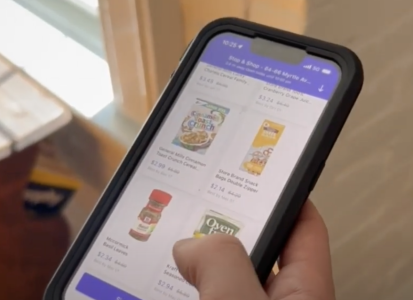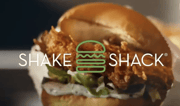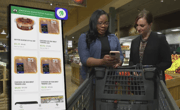This app helps you rescue groceries stores would toss—and saves you big money
By
Veronica E.
- Replies 0
With food prices higher than ever, many shoppers are looking for creative ways to keep their fridges full without going over budget.
At the same time, grocery stores across the US throw out billions of pounds of perfectly good food each year—often just because it’s close to the expiration date or has damaged packaging.
But a growing app is helping close that gap.
Flashfood allows shoppers to buy fresh, edible groceries at steep discounts before stores toss them, saving money and cutting down on waste.
Here’s how it works—and why it’s gaining popularity with budget-conscious and eco-minded consumers alike.

According to Recycle Track Systems, grocery stores in the US throw away around 16 billion pounds of food each year.
That includes much more than spoiled produce—it could be anything from yogurt nearing its "best by" date to a dented box of cereal.
With food insecurity still affecting millions and grocery bills rising, the waste feels especially frustrating.
That’s where Flashfood steps in.
Launched in 2016 by Josh Domingues, the app connects stores with shoppers willing to buy slightly imperfect or near-expiration items at discounted prices—often up to 50% off.
It’s a simple idea with a big impact: less food in landfills, more savings for your wallet.
Getting started is easy, and using the app is free.
Here’s how it works:
Flashfood can be a great tool, but it’s not a perfect fit for every shopper.
Here are a few things to be aware of:
One writer recently tested Flashfood at a Stop & Shop and came away with quite a haul: salmon, chicken wingettes, pork chops, Italian sausage, mixed fruit, and pantry items with slight box damage.
Total cost? Around $30—nearly half of what they would’ve spent at full price.
Unlike some food rescue programs, Flashfood isn’t a mystery box.
You’ll see clear photos and descriptions of every item before purchasing.
And because inventory updates in real time, you can even shop the app while you're in-store to find last-minute additions that fit your meal plan.
Flashfood is catching on because it hits a sweet spot between practicality and purpose. Here’s what it offers:
Flashfood could be a great choice if:
On the other hand, it might not be a great fit if you rely on grocery delivery, need exact items each week, or don’t have a nearby partner store.
Want to make the most of your first order? Keep these pointers in mind:
Flashfood is a great option for shoppers who want to stretch their grocery budget, reduce waste, and support a more sustainable food system—all without changing much about how they shop.
It’s easy to use, low-risk, and surprisingly rewarding.
Read next: Are food labels tricking you? What those dates really mean

Have you scored a great deal or discovered something new through Flashfood? Do you use a similar app or have tips for grocery savings? Share your experience in the comments—we’d love to hear how you’re making the most of every meal!
At the same time, grocery stores across the US throw out billions of pounds of perfectly good food each year—often just because it’s close to the expiration date or has damaged packaging.
But a growing app is helping close that gap.
Flashfood allows shoppers to buy fresh, edible groceries at steep discounts before stores toss them, saving money and cutting down on waste.
Here’s how it works—and why it’s gaining popularity with budget-conscious and eco-minded consumers alike.

Shoppers can use the Flashfood app to find discounted groceries nearing their sell-by date, helping save money and reduce food waste. Image Source: YouTube / CBS Pittsburgh.
The food waste problem—and how Flashfood helps
According to Recycle Track Systems, grocery stores in the US throw away around 16 billion pounds of food each year.
That includes much more than spoiled produce—it could be anything from yogurt nearing its "best by" date to a dented box of cereal.
With food insecurity still affecting millions and grocery bills rising, the waste feels especially frustrating.
That’s where Flashfood steps in.
Launched in 2016 by Josh Domingues, the app connects stores with shoppers willing to buy slightly imperfect or near-expiration items at discounted prices—often up to 50% off.
It’s a simple idea with a big impact: less food in landfills, more savings for your wallet.
Also read: The 4 best cheap McDonald’s meals for seniors trying to save
How to use Flashfood in 5 easy steps
Getting started is easy, and using the app is free.
Here’s how it works:
- Download the app: It’s available on both iOS and Android—no subscription required.
- Find a store: Use the map feature to see participating stores near you. Partners include Meijer, Stop & Shop, Food Lion, Piggly Wiggly, and more. Coverage is strongest in the East Coast, California, and Nevada—but growing.
- Browse and shop: Scroll through available items, including produce, meat, dairy, and pantry staples. Listings show photos, original and discounted prices, and expiration dates.
- Pay in-app: Add items to your cart and check out securely. A small service fee is applied (5% of your order, capped at $2.99).
- Pick up your food: Visit the store, find the Flashfood pickup area (usually near checkout), and show your confirmation. Staff will hand over your items—no extra packaging or fuss.
Also read: Want the best discounts at T.J. Maxx and Marshalls? The “J rule” might be the secret code you’ve been missing
Things to keep in mind
Flashfood can be a great tool, but it’s not a perfect fit for every shopper.
Here are a few things to be aware of:
- Limited availability: Not every store has a huge inventory, and popular items can sell out fast.
- No delivery option (yet): You’ll need to pick up your order in person.
- Some items may be ‘imperfect’: That might mean a dented can or a slightly soft apple—but they’re still safe and edible.
- Not everywhere—yet: If there’s no participating store nearby, you won’t be able to use the app. But you can request expansion through the app’s settings.
Also read: The surprising truth about discounted name brand skincare at T.J. Maxx–here's what experts say you're really buying!
What kind of deals can you expect?
One writer recently tested Flashfood at a Stop & Shop and came away with quite a haul: salmon, chicken wingettes, pork chops, Italian sausage, mixed fruit, and pantry items with slight box damage.
Total cost? Around $30—nearly half of what they would’ve spent at full price.
Unlike some food rescue programs, Flashfood isn’t a mystery box.
You’ll see clear photos and descriptions of every item before purchasing.
And because inventory updates in real time, you can even shop the app while you're in-store to find last-minute additions that fit your meal plan.
Also read: Think that swollen food packaging is safe? Here’s why you might want to think twice before your next meal
Why shoppers are loving it
Flashfood is catching on because it hits a sweet spot between practicality and purpose. Here’s what it offers:
- Big savings: Many items are discounted by 50% or more.
- Less waste: Every rescued item means less food in the trash.
- Eco-friendly: Fewer single-use bags and packaging.
- Simple interface: The app is easy to navigate, and pickup is hassle-free.
Also read: That label said "fresh"—but what a Costco shopper found tells a different story
Is Flashfood right for you?
Flashfood could be a great choice if:
- You live near a participating store
- You’re flexible with your grocery list
- You want to save money without sacrificing quality
- You care about reducing food waste
On the other hand, it might not be a great fit if you rely on grocery delivery, need exact items each week, or don’t have a nearby partner store.
Also read: Why this shopper ditched store-bought bread forever—shocking reason revealed!
Tips for first-time Flashfood users
Want to make the most of your first order? Keep these pointers in mind:
- Check the app in the morning for the freshest selection.
- Be flexible with your list—some items may surprise you.
- Plan to pick up the same day, especially for perishables.
- Bring your own bag to avoid waste and make pickup easier.
Flashfood is a great option for shoppers who want to stretch their grocery budget, reduce waste, and support a more sustainable food system—all without changing much about how they shop.
It’s easy to use, low-risk, and surprisingly rewarding.
Read next: Are food labels tricking you? What those dates really mean
Key Takeaways
- Flashfood helps shoppers buy near-expiration or imperfect grocery items at up to 50% off from select partner stores.
- The app is free to use, with a small service fee, and requires in-person pickup—no delivery options are available yet.
- Not all areas are covered, but participating stores include Stop & Shop, Meijer, Food Lion, and others, mainly on the East Coast and in California and Nevada.
- Flashfood is a practical way to save money, reduce food waste, and shop more sustainably—especially for flexible shoppers near a participating location.
Have you scored a great deal or discovered something new through Flashfood? Do you use a similar app or have tips for grocery savings? Share your experience in the comments—we’d love to hear how you’re making the most of every meal!







